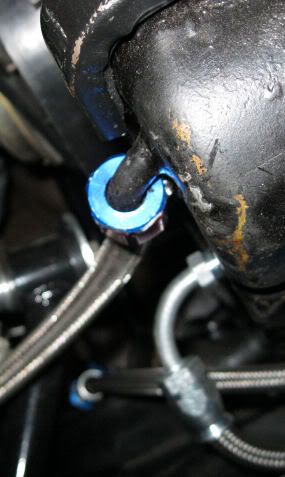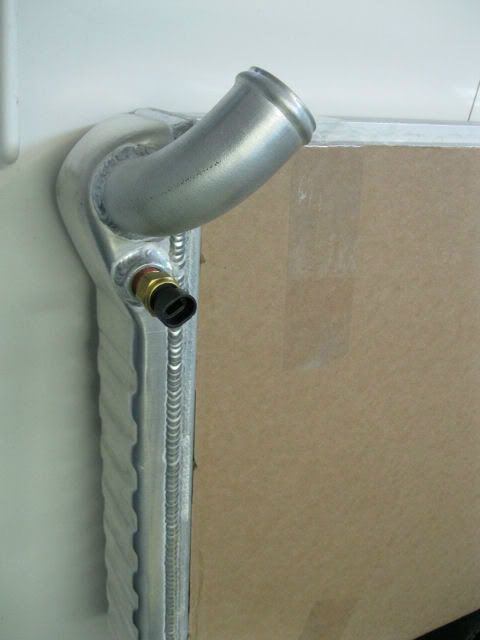To that point, I bought a very nice aluminum radiator from a vendor on ebay at a very reasonable price. Hib is right- DeWitts isn't the only show in town.
I'm listing the address of the manufacturer to illustrate the point that DeWitts isn't the only manufacturer.
Northern Factory, Inc :: Your Source for...
The vendor I used for <$400-
UNIVERSAL PARTS INC items - Get great deals on CUSTOM SHROUD ELECTRIC FAN, CHEVY CAMARO CHEVELLE items on eBay Stores!
I've been very happy with my radiator from them. It fits great with only a minimal modification to the stock shroud. I had to notch the shroud around the upper hose provision a little less than a quarter of an inch.
I've added some pictures so that y'all can see how it looks and fits.
That's a fine solution for a small block but the original poster has a big block. Modifying it to work is far more than "minimal modification." There is no cap on a big block radiator, just a 3/8" curved nipple to connect the radiator to the separate tank located under the passenger fender (just barely high enough for the big block cooling system.
Radiator Recommendations
If the radiator turns out to be the problem, you have two initial choices: 1) repair, and 2) replace.
Repair
If you choose to repair the radiator that's in the car, you have two more choices:
A) Take it to a reliable shop. By reliable, I mean one that won't cut your shroud in half to make radiator removal faster without calling you first. This will probably be a $500-$1,000 option, maybe more.
B) Do some of it yourself. If you remove the radiator yourself and take it to a radiator shop to be re-cored, you're going to spend at least $100 -- more likely $200. If you break the shroud removing the radiator, you're looking at $300 for a new shroud and you're probably going to find a rotted-out radiator support (another $400 or several hours fixing the rust and/or patching the broken shroud back together). You may end up choosing not to fix the shroud and just install dual electric fans.
Replace
If you decide to replace the radiator, you have three choices:
A) Exact fit brass (original replacement). The brass radiator for a 72 big block runs about $400 plus shipping. If the problem was a corroded and clogged core, this will fix that problem, You still have the do-it-yourself or take it to someone choice, which significantly affects the price.
B) Exact fit aluminum. Not sure of all the suppliers but a DeWitts runs $500 (OK, $495) plus shipping.
C) Replacement radiator. Your radiator core is 27.5 x 18 with driver side top 1-5/8" inlet and passenger side lower 1-3/4" outlet. You can try to adapt a generic radiator with those characteristics but the bends on the original radiator inlet and outlet are tough enough to connect. I wouldn't sign up for the extra effort even though I'm really really frugal.
I've been messing with my 72 big block automatic air car. The radiator was re-cored three decades ago when an engine mount broke (taking out the fan, radiator and shroud). Installed electric fans and even had a new shroud made to fit them. Radiator was flushed and a new petcock soldered on last year. It works but doesn't instill any confidence I can drive the car worry-free. I finally broke down and ordered the DeWitts radiator. Beyond the price, which I found was more reasonable than most, I wanted some extra features on mine. I am putting dual Spal fans and controller so I wanted a bung for the temperature sensor installed at the top of the driver side tank. I also wanted a -6AN bung installed at the top of the passenger side tank, in place of the curved nipple, so I could connect the radiator to the remote tank with a more reliable braided stainless line. Not sure about the other vendors but DeWitts included these changes at no extra charge.











